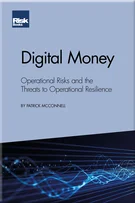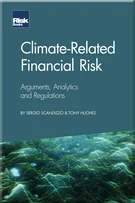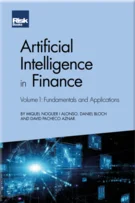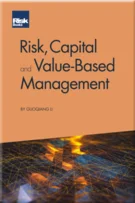Credit risk – Probabilities of default models
Acknowledgements
Foreword
Preface
Introduction
Regulator motivation and aims
Scenarios
Two underappreciated climate risk topics: Exposure at default and asset valuation
Assessing the available evidence related to consumer credit risk
The modelling of climate-related financial risk
Credit risk – Probabilities of default models
Climate-related loss given default
Market risk
Liquidity risk
Operational risk
The (limited) power of disclosures
Financial regulators’ climate mandate should be formalised
Where to for climate risk regulation?
Conclusions: Using finance to drive climate solutions
References
INTRODUCTION
Although climate risk can impact every financial activity and thus potentially affect all risk categories, credit risk is by far the primary concern, certainly because it represents the largest exposure for most financial institutions, but also because it is straightforward to adapt the existing supervisory framework, routinely used for the analysis of stress scenarios.
The development of models for the assessment of credit risk has evolved in response to several macroeconomic factors as well as to radical shocks of both a financial and regulatory nature. In the years following the end of the Bretton-Woods agreement, the main determinants of this evolution were the increase in volatility and consequent number of bankruptcies as well as the technological advancements behind progressive disintermediation and the rise of off-balance sheet derivative instruments. More recently, impulse for ever more refined credit risk analysis has come from competition in margins and yields, driven by low interest rates and globalisation as well as, unsurprisingly, from the fallout and industry-wide soul-searching that followed the 2008–2009 financial crisis (Hao, Alam and Carling, 2010)
Copyright Infopro Digital Limited. All rights reserved.
As outlined in our terms and conditions, https://www.infopro-digital.com/terms-and-conditions/subscriptions/ (point 2.4), printing is limited to a single copy.
If you would like to purchase additional rights please email info@risk.net
Copyright Infopro Digital Limited. All rights reserved.
You may share this content using our article tools. As outlined in our terms and conditions, https://www.infopro-digital.com/terms-and-conditions/subscriptions/ (clause 2.4), an Authorised User may only make one copy of the materials for their own personal use. You must also comply with the restrictions in clause 2.5.
If you would like to purchase additional rights please email info@risk.net










